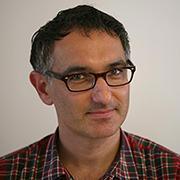Research Articles
Milyavsky, M., A. Mimran, S. Senderovich, I. Zurer, N. Erez, I. Shats, N. Goldfinger, I. Cohen, and V. Rotter. 2001. Activation of p53 protein by telomeric (TTAGGG)n repeats. Nucleic Acids Res 29:5207-15.
Milyavsky, M., I. Shats, N. Erez, X. Tang, S. Senderovich, A. Meerson, Y. Tabach, N. Goldfinger, D. Ginsberg, C. C. Harris, and V. Rotter. 2003. Prolonged culture of telomerase-immortalized human fibroblasts leads to a premalignant phenotype. Cancer Res 63:7147-57.
Milyavsky, M., Y. Tabach, I. Shats, N. Erez, Y. Cohen, X. Tang, M. Kalis, I. Kogan, Y. Buganim, N. Goldfinger, D. Ginsberg, C. C. Harris, E. Domany, and V. Rotter. 2005. Transcriptional programs following genetic alterations in p53, INK4A, and H-Ras genes along defined stages of malignant transformation.Cancer Res 65:4530-4
Milyavsky, M., I. Shats, A. Cholostoy, R. Brosh, Y. Buganim, L. Weisz, I. Kogan, M. Cohen, M. Shatz, S. Madar, E. Kalo, N. Goldfinger, J. Yuan, S. Ron, K. MacKenzie, A. Eden, and V. Rotter. 2007. Inactivation of myocardin and p16 during malignant transformation contributes to a differentiation defect. Cancer Cell 11:133-46
Milyavsky, M., Gan, O. I., Trottier, M., Komosa, M., Tabach, O., Notta, F., Lechman, E., Hermans, K. G., Eppert, K., Konovalova, Z., Ornatsky, O., Domany, E., Meyn, M. S., and J. E. Dick. 2010. A distinctive DNA damage response in human hematopoietic stem cells reveals an apoptosis independent role for p53 in self-renewal. Cell Stem Cell: 7(2): 186-97.
Chan G, Cheung LS, Yang W, M. Milyavsky, Sanders AD, Gu S, Hong WX, Liu AX, Wang X, Barbara M, Sharma T, Gavin J, Kutok JL, Iscove NN, Shannon KM, Dick JE, Neel BG, and B.S. Braun. 2011. Essential role for Ptpn11 in survival of hematopoietic stem and progenitor cells. Blood 117(16): 4253-61.
Louria-Hayon I., Ruston J.C.F., , Gish G, Jin J, Kofler M. M., Lambert J-P., Adissu H. A., Milyavsky M, Herrington R., Minden M. D., Dick J. E., Gingras A-C., Iscove N. N., and T. Pawson. 2013. The Lnk adaptor suppresses radiation resistance and radiation-induced B-cell malignancies by inhibiting IL-11 signaling. PNAS 110(51):20599-604.
Reviews
Biechonski, S., and M. Milyavsky. 2013. Differences between Human and Rodent DNA-Damage Response in Hematopoietic Stem Cells: at the Crossroads of Self-Renewal, Aging and Leukemogenesis. Translational Cancer Research 2 (6):372-383


